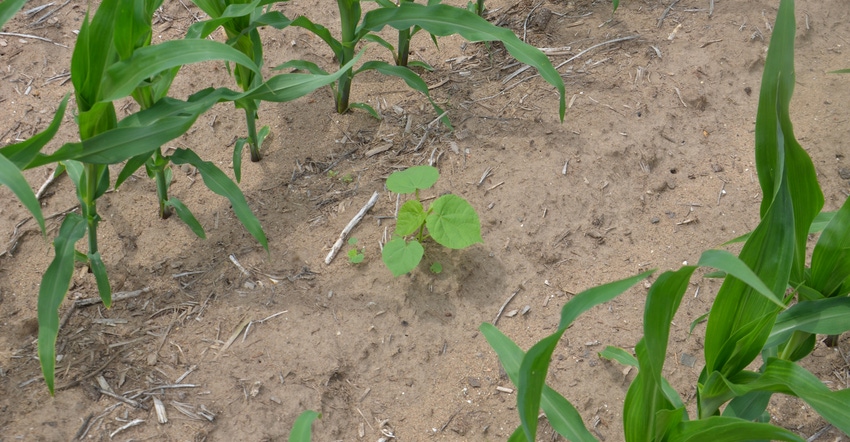
Johnson wasn’t surprised when velvetleaf showed up in one of the virtual cornfields he was asked to evaluate for suggestions.
“Velvetleaf was a problem many years ago, then hadn’t been a problem for a long time, says Johnson, Purdue University Extension weed control specialist. “Now, we’re starting to see it reemerge and more people are noticing it. We’re not yet sure why it’s re-emerging, but there are ways to control it.”
In corn, like in this field, Johnson says Callisto, Laudis or Impact would be effective if velvetleaf shows up as an escape after your soil-applied residual herbicide applications. It’s easy to spot with its large, heart- or V-shaped leaves near the top of the plant. It’s also sometimes called button weed.
If you’re planting soybeans and have noticed velvetleaf showing up recently, applying Authority or Valor products pre-emergence should prevent it from returning. If you find it as an escape weed in soybeans, post options include Aim or Resource.
If you’re growing soybeans with post-herbicide tolerant traits, you have other options, Johnson says. Dicamba in Xtend or Xtendflex soybeans should take care of it if it’s small. Choose from any of the dicamba products labeled for post-emergence application over dicamba-tolerant soybeans. If you grow Enlist soybeans, 2,4-D choline should knock it out, Johnson says. Neither 2,4-D nor glyphosate will work well on large plants. Add Aim or Resource if the plants are more than 6 to 8 inches tall, following label directions, Johnson advises.
About the Author(s)
You May Also Like




